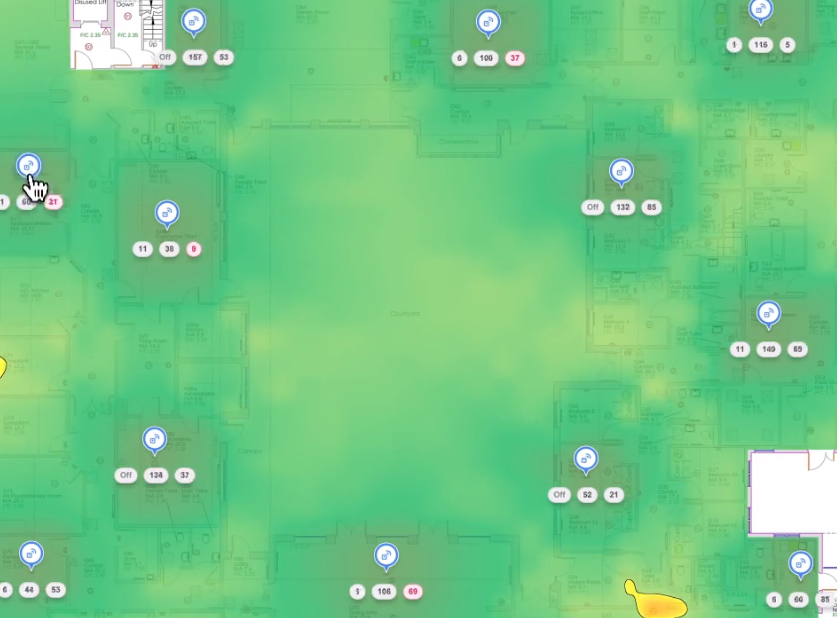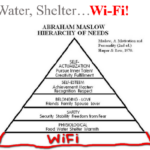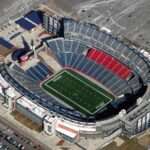I would define High Density/Capacity WLAN as those areas with a large number of devices (25-100) in a single coverage area/service area/cell or RF collision domain (i.e. ~2000 – 6000 square feet indoors depending on building characteristics, TX power, etc.) If more than 100 client devices in a single coverage area, I would consider that Very High Density (VHD). In this blog, we will focus on High Density. With an average of 100 square feet per employee/user in a typical office in the US today, you are looking at 20 users per 2000 square feet. With an average of 2 to 3 devices per user, you are looking at 40-60 devices per 2000 square feet. With that said, you could likely just default your indoor designs to High Density these days. Your square footage per employee/user and devices per user may vary but you get the idea.
Your WLAN Design Standard or Design should include High Density design requirements and methodology such as:
- All areas not specifically identified as Very High Density (VHD) or another specialized deployment type are considered High Density (HD) areas with an assumption of an average of 100 square feet per employee/user (20 users per 2000 Square Feet and an average of 2 client devices per user for a total of 40 client devices). High Density (HD) areas are defined as those areas with a large number of client devices (25-100 client devices) in a single coverage area/service area/cell or RF collision domain (i.e. ~2000 – 6000 square feet indoors depending on building characteristics, TX power, etc.) If more than 100 client devices in a single coverage area, see Very High Density (VHD)/Capacity.
- Design for a maximum of 54 client devices per AP (40 on 5 GHz radio and 14 on 2.4 GHz) in High Density (HD) areas to meet the design requirement of a minimum of 5 Mbps of actual throughput per client device to support High Definition (HD) video applications (see bullets below to understand how 54 was determined). Space APs ~45 feet apart to provide coverage/capacity for ~2000 square feet per AP with enough overlap for seamless roaming (actual spacing to be determined by the Pre-install Remote Predictive Design/building characteristics). With support for 54 client devices per AP, this supports today’s requirement of 20 users per 2000 Square Feet and an average of 2 client devices per user for a total of 40 client devices with room to grow to ~3 devices per user.
- With 2×2, 11ac wave 2, 5 GHz @ 40 MHz with short guard interval (4 micro seconds), the max data rate per radio is 400 Mbps and actual throughput per radio is ~200 Mbps (assuming Wi-Fi overhead and accounting for some interference). With a design requirement of 5 Mbps of actual throughput per client device, that is support for 40 client devices per 5 GHz radio @ 40 MHz.
- With 2×2, 11n, 2.4 GHz @ 20 MHz with short guard interval (4 micro seconds) the max data rate per radio is 144.4 Mbps and actual throughput per radio is ~72.2 Mbps (assuming Wi-Fi overhead and accounting for some interference). With a design requirement of 5 Mbps of actual throughput per client device, that is support for 14 client devices per 2.4 GHz radio @ 20 MHz.
This blog is part of a series on the WLAN Design Standard/Design including High Density, Very High Density and other Specialized Deployment Scenario considerations.







Recent Comments